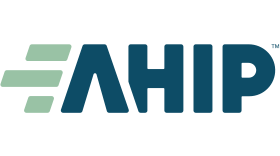
Reinsurance, Risk Adjustment, and Risk Corridors Aim to Help Insurers Navigate Health Insurance Exchanges

A focus at the America's Health Insurance Plans Institute 2012 is health insurance exchanges (HIX). With 30 million newly insured lives entering HIX in 2014, insurers face considerable risk. To assist insurers with managing this risk, the Centers for Medicare & Medicaid Services have developed 3 methods-reinsurance, risk adjustment, and risk corridors.
One of the main focuses at the America’s Health Insurance Plans (AHIP) Institute 2012 is health insurance exchanges (HIX). In fact, the discussion around HIX is so important at this time that a separate Exchange Conference was set up for a full day of discussions featuring some of the key opinion leaders in this space.
Two speakers in particular—Alice Hagan and Jim Whisler of Deloitte Consulting LLP—spoke about the “3 R's” — Reinsurance, Risk adjustment, and Risk corridors. With 30 million newly insured lives entering HIX in 2014, health insurers face considerable risk in that claims could significantly exceed premiums. In addition, traditional risk management tools, such as underwriting and pre-existing condition exclusions, are no longer permitted. To help insurers manage this risk, the Centers for Medicare & Medicaid Services have developed these methods, which Hagan and Whisler helped define as the following:
Reinsurance — A temporary program to provide stability in the individual market when insurance reforms go into effect. Additionally, reinsurance aims to offer protection to issuers by paying a portion of the claims for high-cost members.
Risk adjustment -- Permanent protection to issuers that enroll high-risk populations by adjusting payments across issuers to reflect risk of enrolled population. There are 5 components to the risk adjustment model:
- A point system in which insurance members are given a 1 for costing the average; a 1.1 would indicate a member that costs 110% of the average and a member with 0.9 would cost 90% of the average.
- Coming up with an aggregate for an issuer.
- Identifying how charges and reimbursement occur.
- Collecting necessary data.
- Implementing a schedule.
(There still remain a number of unknowns around each of these components, added Whisler.)
Risk corridor — A temporary program to protect against uncertainty in setting rates. In this method, payments made between qualified health plans by Health and Human Services (HHS) limit loss or gains. This method is funded through contributions from the plans (including self-insured plans) and is similar to the Medicare Part D Program. The aim is to limit risks to plans that are pricing incorrectly. The target is equal to earned premium less actual administrative costs with a 20% limit. The risk corridor method is intended to be used by qualified health plans that are outside of the exchange but are substantially similar to those offered within the exchange.
Here are some of the other key takeaways from Hagan and Whisler’s presentation:
- States seem to be getting less latitude as time goes on; “We are moving to a model where, in 2014, they will need to abide by the HHS model,” said Whisler.
- Product and pricing strategy capabilities should be developed now in order to win post in 2014.
- Plans should approach product design with an entirely new customer in mind. Product differentiation and attractive price points will be critical.
- 2012 will present a pricing conundrum, requiring a revised pricing approach; the pricing process in the future will be more complex, as health plans contend with an array of new influences and unknowns.
- With major program elements for each of these methods remaining unidentified, insurers are still subject to future guidance. This means that health plans will face aggressive implementation guidelines, requiring key decisions with incomplete data. “You’re going to need to anticipate some things and make some decisions up front,” said Whisler.
To learn more about the evolution of HIX, please visit the
Newsletter
Stay ahead of policy, cost, and value—subscribe to AJMC for expert insights at the intersection of clinical care and health economics.







































